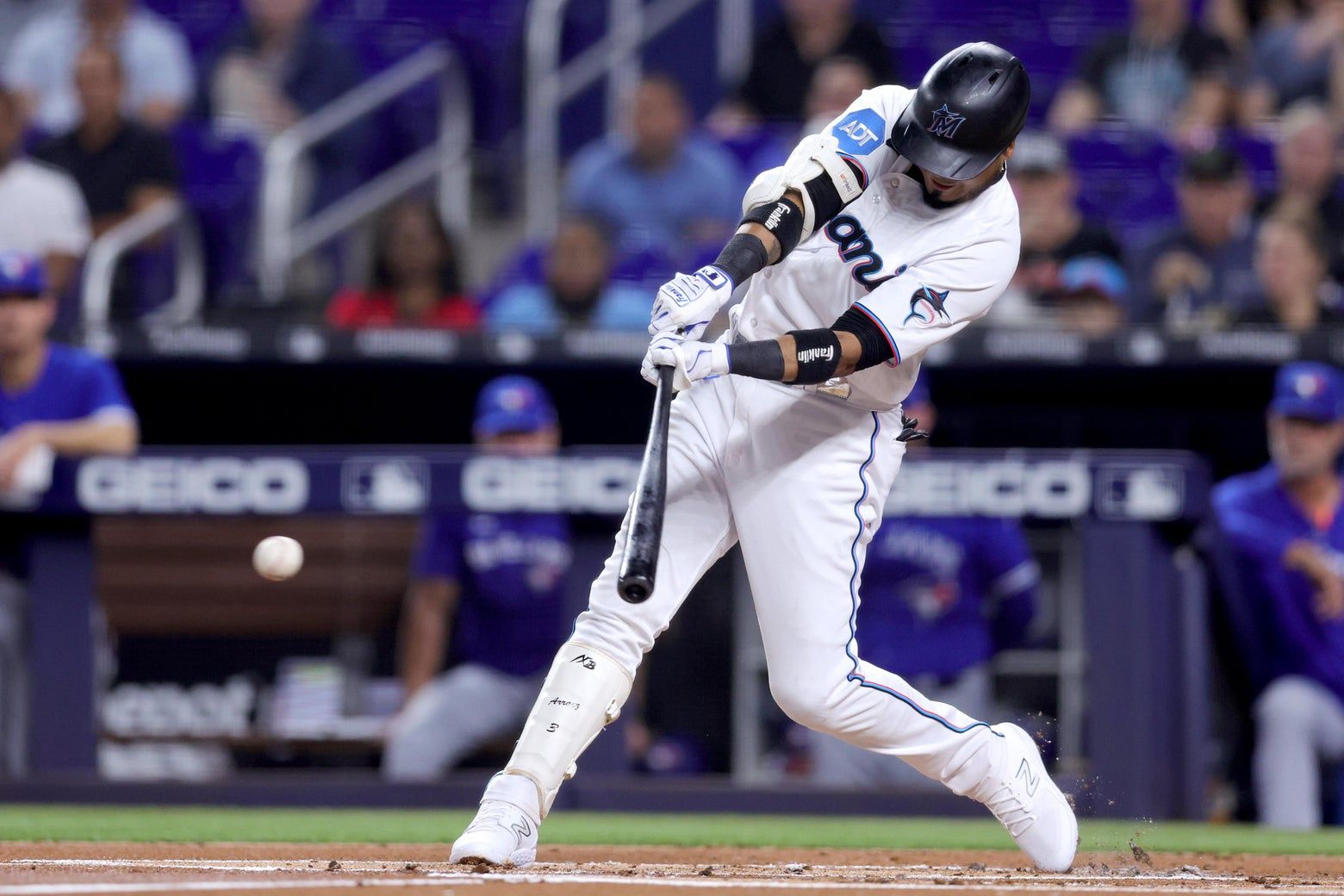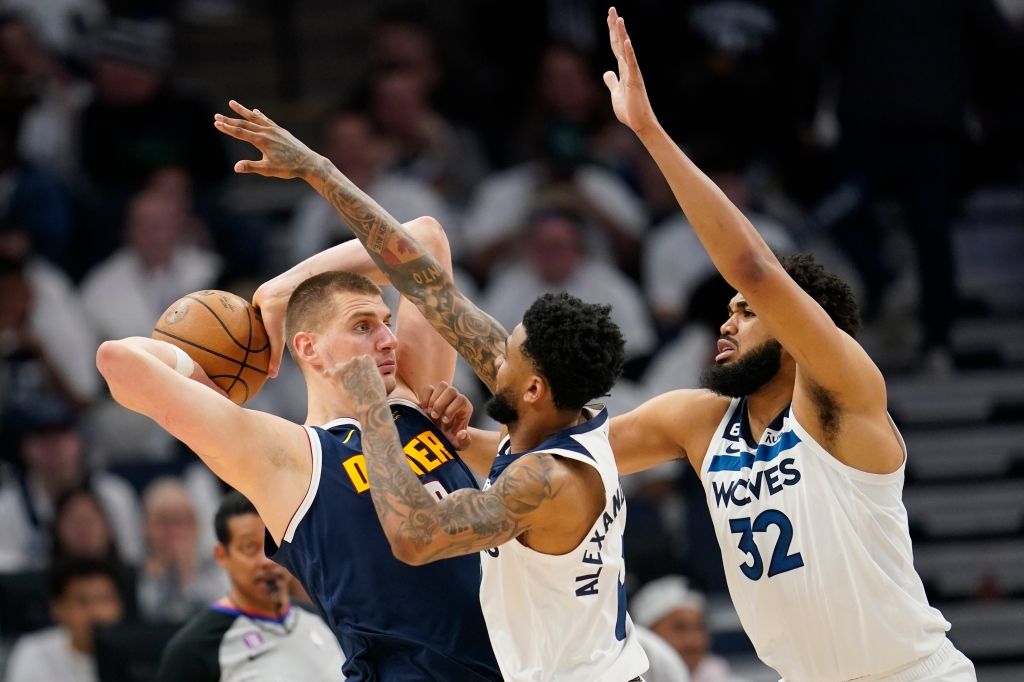The Historic Thrill of Baseball’s Greatest Hitting Stretch in Years
One of the great stretches of hitting in modern baseball history is taking place night after night in the cavernous, mostly empty home of the Miami Marlins. The Marlins’ general forgetability—forged for years by often indifferent ownership—is probably why Luis Arráez, the club’s second baseman, is not one of the biggest stories in the mainstream sports press during these precious June weeks when baseball has a lot of the spotlight to itself. Arráez is hitting for a .398 average through Tuesday, a scalding 68-game start that has him shockingly close (if still not likely) to being the first qualifying hitter in the divisional era (dating to 1969) to hit .400. He probably won’t get there in the end. (Though at publication time, he got two hits during his game against the Toronto Blue Jays, to pull up to .401.) Nobody has beaten even .394 since Tony Gwynn in 1994, and not since Rod Carew’s .388 in 1977 has someone gotten close while playing a full season’s worth of games. But, damn it, Arráez is right there as Major League Baseball nears the All-Star break.
Advertisement
Advertisement
Advertisement
Advertisement
One neat thing about Arráez’s hitting is that he’s already had a mildly historic run. While it would be cool if he could stay on .400 watch deep into the summer, Arráez’s first 68 games are their own thing. The last time any hitter had a 68-game stretch of ferocious hitting like this, at any point in the season, was when the Houston Astros’ Jose Altuve went on a .412 tear in mid-2017. The last time a hitter whose team wasn’t electronically stealing signs did so was Cinncinati Red Joey Votto’s own .412 run of 68 games in 2016. Every player who’s hit .398 over any 68-game period in the 21st Century is either a legend or in more or less the next tier down of big star: Josh Hamilton, Chipper Jones, Ichiro Suzuki, Barry Bonds, Johnny Damon, and Nomar Garciaparra are Arráez’s peers here. Only Ichiro’s 2005, on the heels of setting the all-time record with 262 hits in 2004, came at the very beginning of the season as Arráez’s has. When the only other hitter who has stormed out of the gates like a player is literally Ichiro, it is a good indicator that the hitter is doing something pretty swell.
Advertisement
Advertisement
For a change, the Marlins are good fun this year. Arráez is the biggest reason, but the club also has slugging titan Jorge Soler mashing great quantities of taters (21 so far) and an optimistic-looking young pitching staff that has had some warts this season but also has room to grow. (It will help if reigning Cy Young winner Sandy Alcantara starts to look more like himself.) The Marlins are 10 games above .500 and have slightly better than coin-flip odds to make the postseason, per FanGraphs, and we should all hope they hang around for a while. Arráez battling to stay in .400’s proximity on a contending team would be a frenetic spectacle.
Advertisement
A brilliant run of hitting for batting average brings a unique thrill, something different than what happens in a big home run chase. When Aaron Judge was chasing his 62nd homer last year, every at-bat brought boom-or-bust suspense, whole ballparks waiting with bated breath for moments that, even in Judge’s case, were fairly rare. (He “only” hit a homer in 9 percent of his trips to the plate.) A hitting stretch like Arráez’s is a more rhythmic drumbeat of offense, something that lets up for three or four at-bats at a time instead of 10. What the 26-year-old Arráez is doing now calls to mind a different 26-year-old Marlins second baseman named Luis, this one from 2002: Luis Castillo, whose 35-game hitting streak prompted live look-ins on TV and scared Joe DiMaggio’s ghost at least a little. Arráez’s excellence has not come in streak form—his longest games-with-a-hit streak of the year is 12—but in a barrage of two-, three-, four-, and five-hit games. He’s had 31 multihit appearances, and just in June, he’s had three separate 5-for-5s, notching 11 singles, three doubles, and a homer spread across them.
Advertisement
Advertisement
Advertisement
Those homers are rare. Arráez has just two of them. He is listed at 5-foot-10 and 175 pounds, and his batted-ball measurements are those of a small player. According to MLB’s Statcast data, Arráez is at almost the very bottom of the majors in how often he barrels the ball up and hits it hard. The greatest hitting-for-average stretch in several presidential administrations is coming from a player who does not hit the ball hard. Nor does Arráez run fast (he’s in the league’s 26th percentile in sprint speed), have a strong arm (14th percentile), or play especially good defense at second.
Advertisement
That might all create one image of Arráez: that he’s a small, slow, one-trick pony whose one trick, hitting for average, has been the result of immense luck. But it’s not really true. Arráez is by far the hardest guy in baseball to strike out, going down that way on just 5.2 percent of his plate appearances, nearly 3 percentage points better than the guy right behind him. So Arráez’s .414 average on balls put into play maps neatly onto his actual average of .398. He’s a true all-fields hitter, going the other way even more often than he pulls the ball. That versatility with the bat makes it extremely hard for defenses to line upposition players against where he’ll hit it.
Advertisement
Related from Slate Alex Kirshner The Team Trying Very, Very Hard to Be the Worst in Baseball History Read More
And what is a pitching staff to do about a hitter who can hit anything? Arráez is hitting .398 against four-seam fastballs, .333 against sinkers, .438 against sliders, .450 against changeups, .455 against curveballs, .360 against cutters, and .333 against splitters. (In exactly seven plate appearances, he does have just one hit against the “sweeper,” which most pitchers do not throw.) His strike zone charts reveal very few hints of effective places to attack him. (Seriously, look at all of that red.)
Arráez is small and slow, and he does not hit for power—but more importantly, he hits. Everything. Wherever it’s thrown, by whomever it’s thrown. Put the ball in play all the time, to anywhere, against any pitch, and you will get hits. Arráez is in the 99th percentile of Statcast’s expected batting average, not quite at .398 but at a still-absurd .338. Varying projection systems think he’ll hit somewhere between the .310s and .330s the rest of the way this year. If he hit .330 from here on out and wound up with 550 at-bats, Arráez would finish with a .361 average, which no qualifying hitter has managed (not counting 2020’s shortened season) since Joe Mauer hit .365 in 2009, with the Minnesota Twins. That’s arguably a conservative scenario, far more probable than the dream of him keeping this up.
Advertisement
Advertisement
Advertisement
Advertisement
While Arráez is new to hitting .398, he is not new to winning batting titles. He’s positioned to coast to the National League’s best average this year after winning the AL title at .316 (kind of low for a batting champion) last season. At that point, Arráez was hitting for the Twins, who decided his best use to them heading into 2023 was as trade bait. Arráez was getting more expensive, going into his second year of arbitration, and would wind up making $6.1 million this year. He isn’t much of a defender, and the Twins had other guys at first base, second base, and designated hitter, where they played Arráez. They also needed pitching, so they used Arráez to get Pablo LópezLopez from the Marlins. LópezLopez has had a down first half, and Arráez is in statistical company with Ichiro and Mauer and freakin’ Bonds, so the Twins have wound up with some egg on their face. If Minnesota makes the playoffs, it’ll be because the AL Central is a dump.
Advertisement
The Twins might have overthought things. Arráez has hit around .300 or better every year of his career, and he was right at a prime age on a team with playoff aspirations. The Twins worried, though: maybe about his arbitration, or maybe about where they’d put him in the field and how that placement might affect his value as a hitter. All are reasonable things for a baseball team to fret over, but maybe less so when a player is a documented hitting machine in the meat of his career. Arráez might have one skill, but it’s made him the 27th-most valuable position player in baseball, much better this year than anyone playing in Minneapolis. The Twins have a bunch of decent players and good ones who should be better than they’ve been, like prized shortstop Carlos Correa. Where would Arráez have fit? It’s a good question, but a better one is where someone who hits like him wouldn’t belong. His fight for .400 is new, but Arráez raking is old.
Source: Slate


